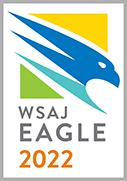In the United States, the NTSB is authorized to investigate all civil aircraft accidents. This statutory authority extends to the ability to test any aircraft, engine, propeller, appliance, or personal property aboard any such aircraft involved in an accident or incident. The NTSB also investigates certain foreign accidents when the accident involves a the civil aircraft that is: (1) of a U.S. operator; (2) of U.S. registry; (3) of U.S. manufacture; or, (4) when the U.S. is the state of design or manufacture of the aircraft or parts thereof.
While the NTSB is vested with control over accident investigation, it has little enforcement or rulemaking authority. That power is given to the Federal Aviation Administration (FAA) by way of the Federal Aviation Act. Therefore, the NTSB is limited to finding the “probable cause” of accidents and making “safety recommendations” to the FAA. It is up to the FAA to enact or enforce regulations based on those recommendations. There are multiple accidents attributed to the FAA’s failure to respond to safety recommendations by the NTSB.
The NTSB’s response to a domestic accident depends on the severity and visibility of the accident. For larger accidents or accidents which involve a high level of publicity, the NTSB usually launches a national “go team” which travels to the scene, takes control of the wreckage, and begins an investigation. For smaller accidents, the NTSB usually dispatches a single Investigator in Charge (IIC). For non-fatal accidents, the NTSB often tasks an FAA employee with travel to the scene.
Regardless of the size of the accident, the NTSB will not investigate the accident alone. Pursuant to 49 CFR § 831.11, other entities will participate as “parties to the investigation.” The IIC is in charge of designating parties:
Party status is limited to those persons, Federal, state, or local government agencies and organizations whose employees, functions, activities, or products were involved in the accident and that can provide suitable qualified technical personnel to actively assist in an investigation. To the extent practicable, a representative proposed by party organizations to participate in the investigation may not be a person who had direct involvement in the accident under investigation.
49 CFR § 831.11(a)(1)
The FAA is always made a party. § 831.11(a)(2). The airframe and powerplant manufacturers for the involved aircraft are almost always invited by the IIC. Often avionics manufacturers and other component manufacturers are invited as well. However, by regulation, “no party representative may occupy a legal position or be a person who also represents claimants or insurers.” § 831.11(b)(1). Therefore, while product manufacturers are nearly always parties to the investigation, representatives of passengers (and pilots) are barred. In Krutch Lindell’s experience, the head of the safety organizations of some major aircraft manufacturers were hired directly from defense law firms which represent those very manufacturers. In addition, the “technical personnel” assigned to assist the NTSB by the manufacturers are rarely the individuals in the organization with the most knowledge about the product.
The NTSB is a small agency and accident investigations often stretch on for years. However, the NTSB will issue a “Preliminary Report” within five working days of the accident. The preliminary report will contain basic information about the accident, such as the location, type of aircraft involved, the phase of flight, and the number of injured or killed persons on board. The preliminary report is intended as a brief synopsis and is subject to change. Later, the NTSB will issue a “Factual Report” which will include additional data gathered by the IIC regarding the accident. The NTSB will likely take a year (or longer) to issue its “Final Report” and the statement of “Probable Cause.” In larger cases, the Final Report will be buttressed by special reports from working groups and NTSB laboratories, contained in an accident docket. In smaller cases, the final report may be little more than a page.

